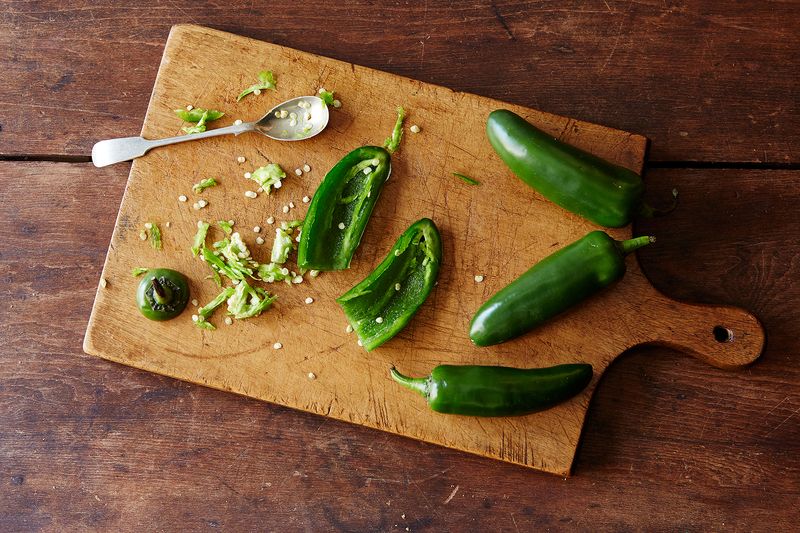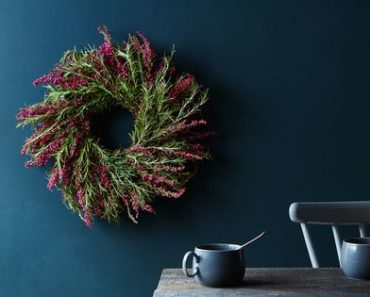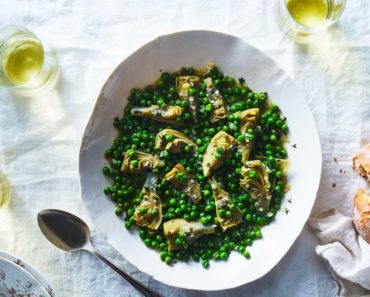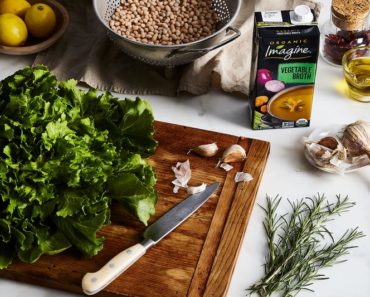I’ve long found it difficult to find a place for single subject cookbooks on my shelves. Much like single use gadgets, I figured I was better off with multi-purpose books that offer a wide variety of recipes. Sure, the single subject columns might have their place if you’re particularly obsessive about chocolate, or, I don’t know, own an apple orchard. But my interests are generally broader, and my shelf space comes at a premium. Besides, how much could there possibly be to say about peppers?

Leave it to Maricel Presilla to change my mind. Presilla’s previous book Gran Cocina Latina is one of my desert island books: a compendium of Latin American cuisine, where I turn when I need to know how sofrito varies from country to country. So when I saw she had a new book coming out this summer, I was intrigued, despite its seemingly narrow subject matter.
Peppers of the Americas is Presilla’s guide to one of her favorite ingredients. The bulk of the book is comprised of two galleries of photographed portraits of chile cultivars both fresh and dried. These include 180 different kinds of peppers, which is roughly one third of the cultivars Presilla has grown in her New Jersey backyard!
The photographs function as wonderful pictorial references, which I used to successfully ID some random chiles I brought home from the farmers market. “Gramma’s hottest chiles” as they were labeled at the market, were actually a long thick variety of cayennes, quite different than the tiny ones I grow in my own garden. From there, I learned cayennes most likely originated in French Guiana, but were spread throughout the world and popularized by the Portugeuse. Presilla also shares cooking tips, tasting notes, cultural anecdotes, and gardening tips for the different cultivars.

by Sarah Jampel
She doesn’t stop there. The first chunk of the book is a crash course in all things pepper, from how they spread throughout the world (Spanish and Portuguese explorers, also bird poop) to botanical notes (did you know that peppers are technically berries?). She has a chapter on growing peppers in your own garden, and covers the basics on buying, storing, roasting, canning, drying, and reconstituting peppers in your kitchen.
And, of course, there are recipes. About 40 of them, drawing from pepper traditions throughout the Americas. Some of them are condiments, like hot sauces, infused vinegars, chile pastes, and the terrifyingly named “End-of-Harvest Superhot Mélange.” There are tamer sauces like romesco and mole as well, and pepper-prominent entrees including piquillo peppers stuffed with refried beans, Puerto Rican kidney bean stew, and red snapper in spicy sauce.
The recipes have lengthy (and engaging) headnotes explaining provenance, cultural significance, and Presilla’s own experience with the dish at hand. The ones I tried—including a New Mexico chile-laced riff on Spanish tortillas—were the real deal and delicious, but perhaps better suited for a Sunday dinner than a frazzled Tuesday night. All the recipes were exacting, though, and decidedly worth the effort.
But I don’t want to give you the idea that the recipes are the main attraction here. This isn’t a bad thing; recipes aren’t the only way to learn about food and cooking, after all. In Peppers, they’re almost an appendix to the rest of the capsicum intel in this volume, which Presilla demurely calls “a highly subjective record of my own garden and kitchen encounters with these remarkable plants.”

by Leslie Stephens
There’s an astounding amount of information here—historical, botanical, and even linguistic. It almost accidentally functions as a crash course in food archaeology, and contains an explainer on the hot hot heat of capsacin, the compound that makes food spicy. And somehow Presilla manages to present the vast majority of this potentially very dry subject matter almost conversationally, as though she is walking you through her backyard pepper pots, glass of wine in hand, telling you anecdotes about each. Pausing by the Brazilian pimenta cumarí and sighing, “I simply adore its herbal and green notes, which remind me of the scent of tomato leaves.”
The whole package is enough to make me reconsider single subject cookbooks. While I still think some can veer flabby, afterthoughts of publishers’ trying to plug up gaps in their catalog, Peppers of the Americas is different. Scholarly, even. And anything that manages to be well-researched and charming will always have a spot on my bookshelves—especially when it’s a book as spicy as this one.
(via Food52)






